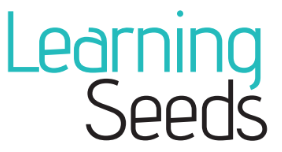
Engagement Lens Applied
The Learning Seeds Milestones of Engagement in Practice
When we model practical solutions to common issues in inclusive early learning environments, the Milestones provide a framework for our approach.
THE PRACTITIONER’S COMPASS
Set your compass so it leads you to the signs of engagement that will guide your teaching
Create structures to spark exploration, interaction and sharing of ideas
Pick your compass markers: defining play goals and responsive teaching goals that help you aim your instruction while maintaining flexibility to respond to what arises
Define Engagement: “learning to learn” skills in a group setting
Prioritize Engagement over mere compliance
Identify opportunities for responsive teaching
EXPLORATION
Help little hands engage: environments and materials
Forming structured and natural environments
Creating small spaces and flow
How classroom layout can help children settle or move
How objects help children explore and conceptualize
How environments support interacting
Visual information and a print-rich environment
A child who explores comfortably plays in proximity to peers. They do not bolt from the environment. They manipulate a variety of objects and materials.
INTERACTION
Guide discovery of the explicit and hidden rules of being with the group
Conversation Milestones
Key words from peers
Key words from the classroom: discovering shared vocabulary
Negotiating, persuading and solving problems with peers
A child who interacts shares reactions and exchanges expressions with peers. They respond to bids for attention and have basic conversations. They correctly seek help, and say “no” verbally rather than physically.
SHARED THINKING
Cultivate pretend play skills as the most important skill preK children are building
The basics of supporting pretend play: settings, characters, roles, actions and change over time (i.e. children do not yet have gestalt imagery skills and need supports to be able to “picture” other people's ideas in sharing and in play)
Pretending challenges: the role of visuals for young learners and how you can create them organically
Balancing power in the play — giving each peer influence on the activity of the group
Abstraction and conceptualizing: help children explore ideas without memorizing inaccurate information
A child who shares thinking can take the perspective of others. They tolerate and enjoy pretending with objects and roles. They can think about the past and present to plan for the future. They have a sense of self-identity, and can also identify with the group.
The Milestones of Engagement
To set engagement goals and track a child’s progress, the Learning Seeds Enlightened Shadow team uses our Milestones of Engagement framework, consisting of seven major experiential categories that emerged from examination of our own daily practice with children.
Educators! We offer innovative, transformative staff development to help your team guide enduring, independent play-based learning. Connect with us to learn more.








